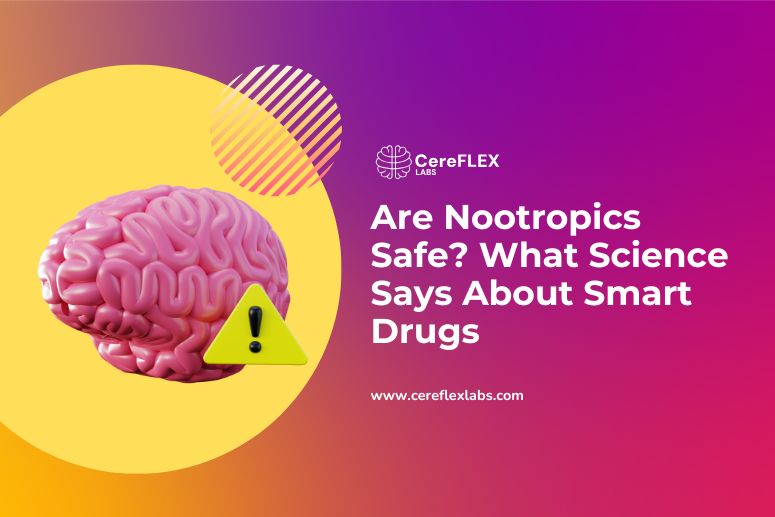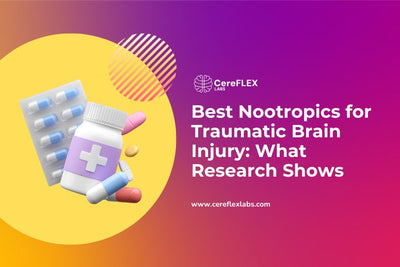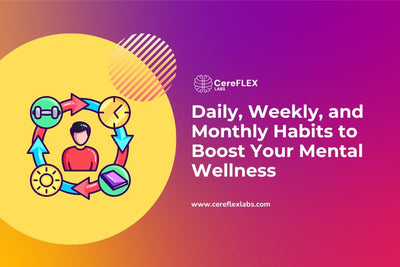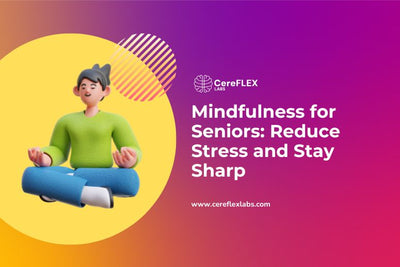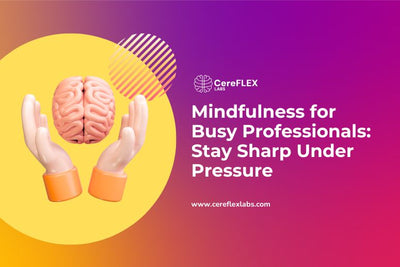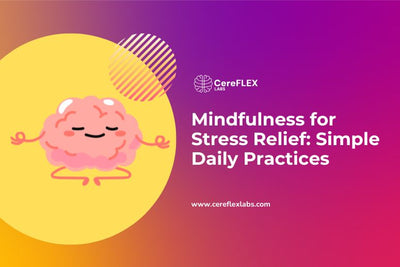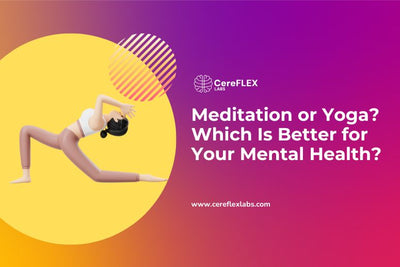Nootropics—also called “smart drugs” or cognitive enhancers—have grown from niche interest to mainstream curiosity.
Students, entrepreneurs, athletes, and creatives alike are turning to these substances for better focus, memory, or sustained mental energy.
Some nootropics are plant-based, like medicinal mushrooms or herbal extracts. Others are synthetic, formulated for more targeted effects. But whether natural or lab-designed, they all raise the same essential question:
Are they safe?
Marketing often promises big benefits, but the real answers lie in the research. This guide breaks down what we know—what’s safe, what’s not, and how to make informed choices that support your brain without unnecessary risk.
Here is the Quick Answer |
|
Nootropics may support focus, memory, and mental clarity—but not all are equally safe. Natural compounds with clinical research are generally well-tolerated, while synthetic options may carry higher risks. For best results, look for third-party tested products, expert formulations, and ingredient transparency. CereFLEX Labs’ AM/PM Protocol uses evidence-backed ingredients in a routine-based system built for safety and consistency. |

What determines the safety of a nootropic?
Nootropics aren’t one-size-fits-all. Their safety depends on the specific compound, how much you take, your health status, and how long you use them.
While some ingredients—especially those used in traditional medicine—have decades of safe use behind them, others remain under-researched or exist in legal grey zones. And even natural compounds can pose risks if used incorrectly.
Understanding both short- and long-term safety is essential before adding any cognitive enhancer to your routine.
Short-Term vs Long-Term Safety
Many natural nootropics—such as L-Theanine or Bacopa monnieri—are considered well-tolerated when used in the short term. These compounds are often found in food or traditional herbal preparations and have a long-standing record of responsible use.
Some synthetic nootropics—like caffeine or racetams—also appear safe at moderate doses for short durations. However, synthetic compounds tend to have less research backing their long-term use, especially in healthy populations.
Long-term safety is where caution becomes more important. Prolonged or daily use may lead to:
- Neurotransmitter imbalances
- Diminished effectiveness due to tolerance
- Withdrawal symptoms (e.g., brain fog, fatigue)
- Psychological dependency (especially with stimulants)
It’s best to cycle nootropics, avoid overuse, and choose compounds with established long-term safety data when possible.
Common Side Effects
Even well-regarded nootropics can produce unwanted effects—especially if used in high doses, stacked inappropriately, or taken without regard for individual variability.
Reported side effects include:
- Sleep disruption, particularly from stimulating compounds like caffeine or Modafinil
- Irritability or anxiety, especially with overuse of stimulants
- Headaches, often linked to racetams without adequate choline intake
- Digestive issues, particularly with poorly absorbed ingredients or low-quality fillers
- Mood dips or brain fog, during withdrawal or after cycling off long-term use
- Mild psychological dependence, when performance becomes linked to supplementation
Most of these risks can be minimized by starting with low doses, choosing clean formulations, and cycling off regularly.
Risks of Stacking or Overuse
Many users combine multiple nootropics into a “stack” in hopes of synergistic effects. But while some expert-formulated stacks are well-balanced, DIY stacking carries elevated risks.
Potential issues include:
- Unpredictable interactions, where one compound alters the effects or metabolism of another
- Overstimulation, which can exhaust your nervous system and lead to energy crashes or irritability
- Cumulative stress, when stimulants, adaptogens, or neurotransmitter modulators are layered without breaks
- Difficulty troubleshooting, as it becomes hard to isolate which compound is causing side effects or benefits
To use nootropics safely, start with a single ingredient. Only add new compounds after observing how your body responds—and avoid combining strong stimulants or unproven synthetics without expert guidance.

Natural vs Synthetic: A Key Safety Distinction
Not all nootropics carry the same risk profile. A major safety factor lies in whether a compound is naturally derived or synthetically produced.
Natural nootropics—especially those with a long history of traditional use—tend to work by supporting the brain’s natural resilience and function. Examples include Rhodiola rosea (known for stress resistance), L-Theanine (which promotes calm alertness), and lion’s mane mushroom (studied for its neurotrophic effects).
When used at appropriate doses, these are generally well-tolerated. Still, even natural ingredients require quality sourcing and consideration of personal tolerance.
Synthetic nootropics, on the other hand, often act with greater potency—and greater uncertainty. Compounds like Modafinil, Adrafinil, and Piracetam may enhance focus or energy but often:
- Lack long-term safety data in healthy adults
- Interact with prescription medications
- Carry legal or regulatory restrictions
- Have a higher risk of overstimulation or dependence
Here’s a simplified breakdown:
Natural (Non-Prescription) Nootropics
➤ Typically lower-risk when used responsibly
➤ Often supported by traditional use or human trials
➤ Still requires care with dosing, sourcing, and purity
Synthetic (Non-Prescription) Nootropics
➤ May be legally restricted or unregulated in Canada
➤ Higher risk of side effects or poor-quality sourcing
➤ Limited safety research in long-term healthy use
Prescription Nootropics (e.g., Modafinil, Adderall)
➤ Not intended for general use without medical oversight
➤ Potential for side effects, dependence, or legal consequences
➤ Should only be used under guidance from a healthcare professional
For a deeper breakdown of these regulated compounds, see our guide to prescription nootropics.
In short, while synthetic compounds can offer sharper or faster effects, they come with greater uncertainty and risk—especially when self-administered. Natural nootropics offer a more gradual, sustainable path to cognitive support for most users.
Who Should Avoid Nootropics?
Even the safest nootropics aren’t right for everyone. Certain groups may face higher risks or lack sufficient research to ensure safe use.
If you fall into one of the following categories, extra caution—or full avoidance—is advised:
Teenagers and Children
Developing brains are more sensitive to neuroactive substances. Even natural nootropics can interfere with growth-related processes or cause overstimulation.
Always consult a pediatric specialist before considering nootropics for minors.
For a more detailed look at this topic, read our full guide to nootropics for kids.
Pregnant or Breastfeeding Individuals
Most nootropics have not been adequately studied during pregnancy or lactation. Without clear safety data, it's best to avoid use during these stages unless under direct medical supervision.
People with Mental Health Conditions
Some nootropics—especially stimulants or serotonin-modulating compounds—can worsen symptoms of anxiety, depression, bipolar disorder, or other psychiatric conditions.
Even natural products may cause emotional shifts or overstimulation. Always consult a healthcare provider if you have a diagnosed condition.
Those Taking Medication
Drug interactions are a serious concern. Nootropics may affect how medications are metabolized, alter neurotransmitter levels, or compound stimulant effects.
Be especially cautious if you're using:
- Antidepressants
- ADHD medications
- Sleep aids
- Blood pressure or heart medications
Consult your doctor or pharmacist before introducing nootropics into a medicated routine.
What makes a nootropic safe?
Nootropic safety depends on more than just the ingredient—it’s about how it’s researched, formulated, and manufactured. Unlike pharmaceutical drugs, which must prove safety before approval, nootropic supplements are generally considered safe until proven otherwise. That’s why choosing high-quality products is essential.
Let’s explore the core factors that define a safe nootropic.

1. Research-Backed Safety
The most reliable safety marker is human clinical data. Ingredients tested in peer-reviewed trials show how the body responds under controlled conditions, what side effects may occur, and what doses are effective and tolerable.
When evaluating a nootropic, look for:
- Human studies (not just animal or cell research)
- Trials that measure both safety and cognitive outcomes
- Doses that match what’s used in the final product
A compound can be “safe” without being “effective”—prioritize those that are both.
2. Advanced Ingredient Forms
Not all ingredients are created equal. Safer, more effective nootropics often use:
- Branded or patented forms, supported by clinical data
- Standardized herbal extracts, which ensure consistent potency
- Bioavailable forms, which are easier for the body to absorb and use
These forms may cost more but reduce the chance of side effects and deliver more predictable results.
3. Thoughtful Formulation
A well-designed nootropic avoids overkill. Look for:
- Clinically appropriate doses—not megadoses
- Minimal use of stimulants
- Synergistic combinations that complement, not compete
Blends created by experts are more likely to avoid risky ingredient interactions and overstimulation.
4. GMP-Certified Manufacturing
How a supplement is made matters. GMP (Good Manufacturing Practices) certification ensures:
- Ingredients are tested for identity and purity
- Facilities are clean and standardized
- Dosing is precise and consistent
Supplements made in uncertified facilities may contain contaminants, inconsistent ingredient levels, or degraded compounds.
5. Clean Delivery Systems
Sometimes, it’s not the active ingredients that cause trouble—it’s the fillers or capsules. Avoid products with:
- Artificial colours or preservatives
- Common allergens like gluten, soy, or shellfish
- Carrageenan or titanium dioxide (linked to inflammation or gut irritation)
The safest products use clean capsules, minimal additives, and hypoallergenic delivery systems.

How to Choose Safe Nootropics
With so many products on the market—and no unified standard for safety—knowing what to look for can help you avoid risky formulations and choose brain supplements that truly support your goals.
Here’s how to spot a safe, high-quality nootropic:
Red Flags to Avoid
Be wary of these warning signs:
- Proprietary blends: These hide exact ingredient amounts, making it hard to assess safety or effectiveness.
- Missing dosage information: If you can’t tell how much of each ingredient you’re getting, skip it.
- No testing disclosures: Lack of third-party testing often means no one is verifying purity, potency, or contaminants.
What to Look For
Trustworthy nootropics will show:
- Clear, transparent labeling of each ingredient and dosage
- Third-party testing for contaminants and active ingredient verification
- Clinically studied compounds at effective, documented doses
- Expert oversight, such as input from doctors, neuroscientists, or formulators
Transparency and science-backed formulation are your best safety guarantees.
Smart Dosing & Stacking
Even with good ingredients, dosage matters. Stick to clinically supported amounts—not mega-doses promising “quick results.”
Avoid DIY stacking unless you understand the interactions. If you’re using a multi-ingredient blend, choose one that’s:
- Professionally formulated
- Designed for synergy, not redundancy
- Clear about dosing and timing
When to Consult a Professional
Always speak to a healthcare provider before starting nootropics if you:
- Are taking prescription medication
- Have a diagnosed medical or psychiatric condition
- Are pregnant, breastfeeding, or under 18
Even natural compounds can interact with medications or affect sensitive systems, so professional guidance helps reduce risk.
Conclusion
Nootropics offer promising support for mental clarity, focus, and cognitive endurance—but only when chosen wisely. The safest options are those:
- Supported by human clinical research
- Transparently labelled
- Manufactured in GMP-certified facilities
- Free from artificial fillers and unproven megadoses
As interest in brain health grows, so does the risk of falling for untested, overstimulating, or misleading products. Prioritizing well-formulated, science-informed supplements ensures your cognitive routine supports your long-term well-being—not just short-term performance.
At Cereflex Labs, safety and science come first. Our AM/PM Protocol is designed to support daily brain function using ingredients selected for their clinical research, tolerability, and regulatory compliance. Each phase offers:
- A clear, non-stimulant daytime formula for cognitive support and mental energy
- A restorative evening formula to promote relaxation, cellular protection, and overnight recovery
Both are made in GMP-certified facilities and include ingredients used to support cognitive clarity, memory, and resilience—without relying on risky synthetics or grey-market compounds.
Support your brain safely and responsibly—with Cereflex Labs’ AM/PM Protocol.
